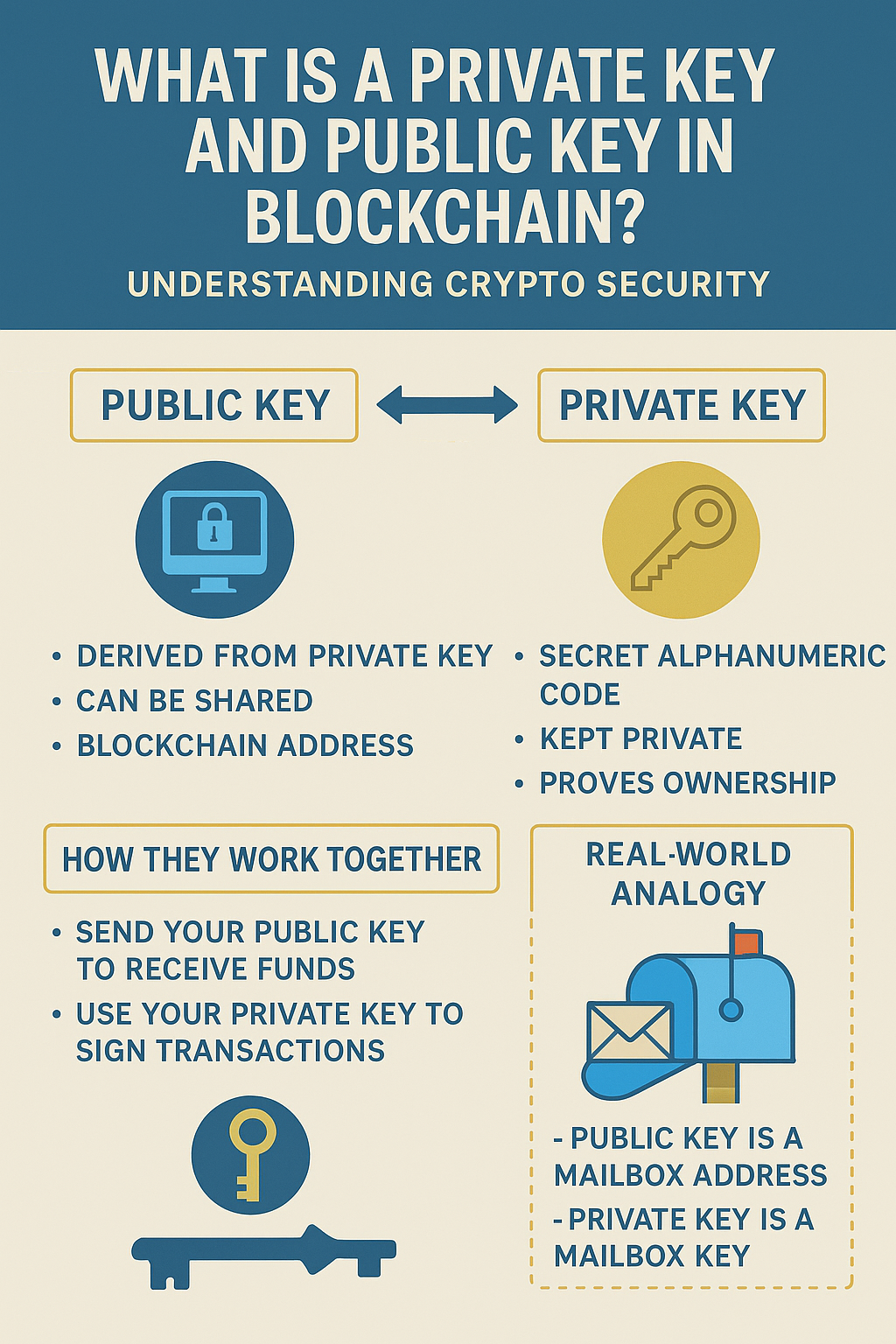Blockchain
Crypto
asymmetric encryption, blockchain address, blockchain guide, blockchain security, blockchain wallet, crypto education, crypto identity, crypto keys, crypto wallet, cryptocurrency safety, cryptography, digital signature, private key, public key, secure transactions
Akshay Thakur
0 Comments
What is a Private Key and Public Key in Blockchain?Understanding Crypto Security
In the world of blockchain and cryptocurrencies, your wallet doesn’t hold money — it holds keys. These digital keys are the core of blockchain security, enabling users to send, receive, and protect their assets. Let’s explore the roles of private and public keys.
1. The Key Concept
Blockchain uses asymmetric cryptography, meaning it relies on two keys:
- A public key that anyone can see
- A private key that only you should know
Together, they form a secure and trustless system for transferring digital assets.
2. What is a Public Key?
A public key is derived from your private key and acts like your blockchain address. You can share it with others to:
- Receive funds
- Verify transactions
- Identify your wallet
Think of it like your email address — anyone can send messages to it, but only you can access your inbox.
3. What is a Private Key?
Your private key is a secret alphanumeric code that proves you own the cryptocurrency in your wallet. It lets you:
- Sign transactions
- Access and move funds
- Prove ownership
It’s like the password to your email — whoever has it can control your account.
Never share your private key. Losing it means losing access to your funds forever.
4. How They Work Together
- You send your public key to receive crypto.
- When you spend or send crypto, your private key signs the transaction.
- The network uses your public key to confirm your signature is valid.
It’s a simple yet powerful way to maintain security without centralized control.
5. Real-World Analogy
Think of a locked mailbox:
- The public key is the mailbox address — anyone can drop letters in.
- The private key is the key to open it — only you can retrieve what’s inside.
Conclusion
Private and public keys are fundamental to how blockchain ensures ownership, trust, and security. Understanding and protecting your private key is one of the most important steps in becoming a confident crypto user.
Need to Unwind? Try Flutter Bees!
If blockchain concepts are buzzing in your head, take a break with the Flutter Bees
- Tap away stress in the Clicker Game
- Play smart in the Bee Hive Defense Game
- Earn rewards just by watching and completing tasks






Post Comment